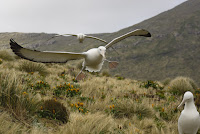The first national park gazetted in the Sudan way back in 1990, Sanganeb is an atoll shaped coral reef on the Red Sea. It, and Dongonab, are said to contain some of the best and most unspoiled coral reefs in the world; both, especially Dongonab, are relatively remote and rarely visited. For the most part, tourism consists of international diving holidays, with visitors flying to Port Sudan and residing on large hotel boats, which travel to anchor at the various diving sites for a few days at a time.
With over 120 coral reefs, with an area of about 26000 hectares (with a length of 6 km and a width of 2 km) - Sanganeb, about 30km. north-east of Port Sudan, is surrounded by 800m. deep water; it has a largely pristine marine ecosystem and a very rich marine wildlife, which include: sharks, dolphins, turtles, barracudas and other types of fishes; and a number of molluscs and urchins. With many of its species found no where else except here, Sanganeb is also known for its high levels of biodiversity. Though the reef is poorly managed, its ecosystem has been very well conserved. Since 1978 commercial fisheries have been banned; this has saved many sharks, which were being mercilessly hunted by fishermen. Turtles and mantas too, can also be found in Sanganeb.
The northern part of the Sanganeb, is deeper and reportedly reaches 48m. It is also where you can easily see sharks. Most dives are made on the southern side, where there are many corals with a vast amount of fish. The south-east side is where you can easily see grey reef sharks. One of the most dangerous places for ships sailing through the Red Sea, Sanganeb has a very well known, very much photographed landmark: its 50m. tall, 268 steps lighthouse which was built by the British between 1956 and 1964. One of the best ways to appreciate the stunning beauty of the reef, is to climb to the top of this lighthouse.



